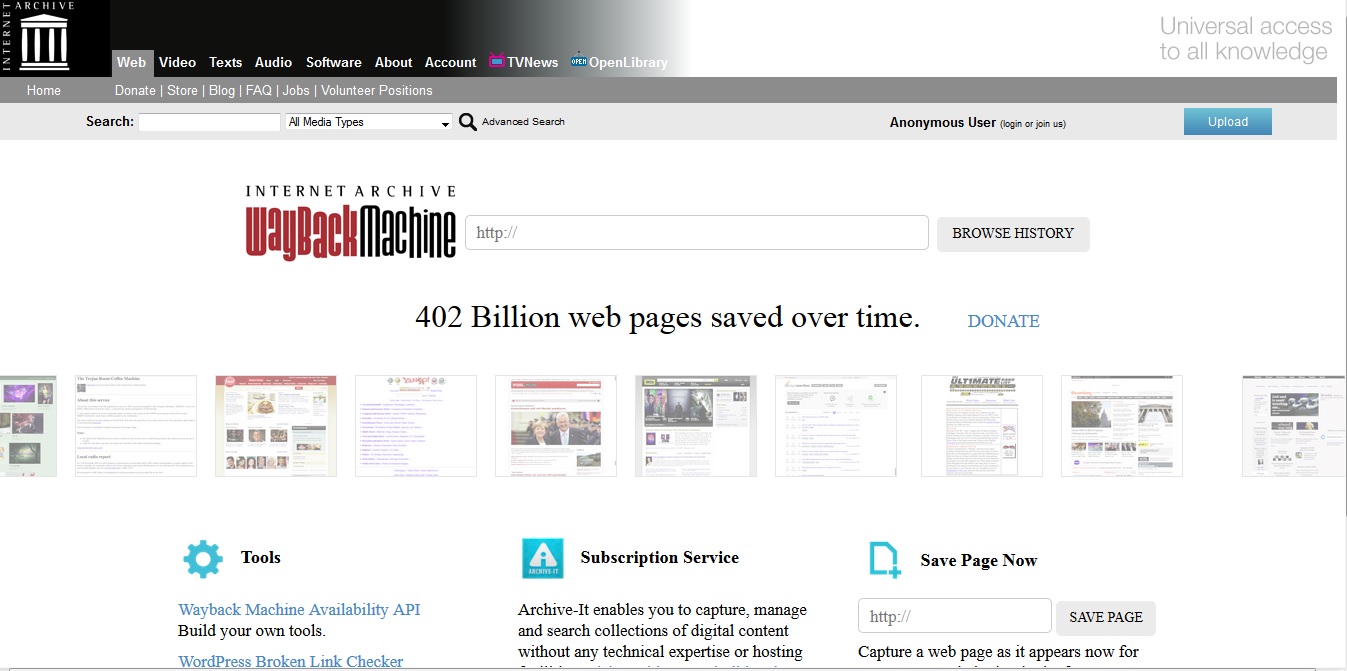The Wayback Machine, or Internet Archive, is a collection of snapshots of websites from the past. The Wayback Machine goes around the internet collecting and archiving pages. That means that you can see the older version of a website, or a website that is no longer online.
You can actually click through the site’s navigation and see multiple pages of the website, in fact. That makes it much better than old screenshots.
We use it to see the evolution of a website, how often it has been updated in the past, and other aspects of the website’s history when we’re getting to know a site before a redesign as well as for other kinds of research. We even have a client right now who is interested in using an old website design as inspiration for a new website we’re building for him.
There are lots of reasons you might want to use the Wayback Machine.
It’s easy to do. Just go to the Internet Archive site and type in or cut and paste the URL (web address) you’re interested in. You’ll see a timeline like the one below. Click on a year and the calendar for that year will show up.
The amount of information for a website varies enormously from one site to another. We often see websites with just a couple of captures over a decade, while the website where you are right now got visited nearly every day in January and has been captured 188 times in total.
I assume that this is because our site is updated frequently with new content, but I don’t know what made us so much more exciting in January than in March.
The quality of the image also varies a great deal. Sometimes there are broken links, missing images and styling, and so on. However, what you see is probably pretty similar in most cases to what people in the distant past (in internet terms) saw when they looked at the site.
Just click on the date in the timeline or calendar that you’d like to see. The site — or as much of it as the Wayback Machine has captured — will pop up and you can interact with it just as you would have done back when it was online.
Pretty cool, eh? Like Wikipedia, this is a free service supported by donations, so consider donating while you’re there.




Leave a Reply